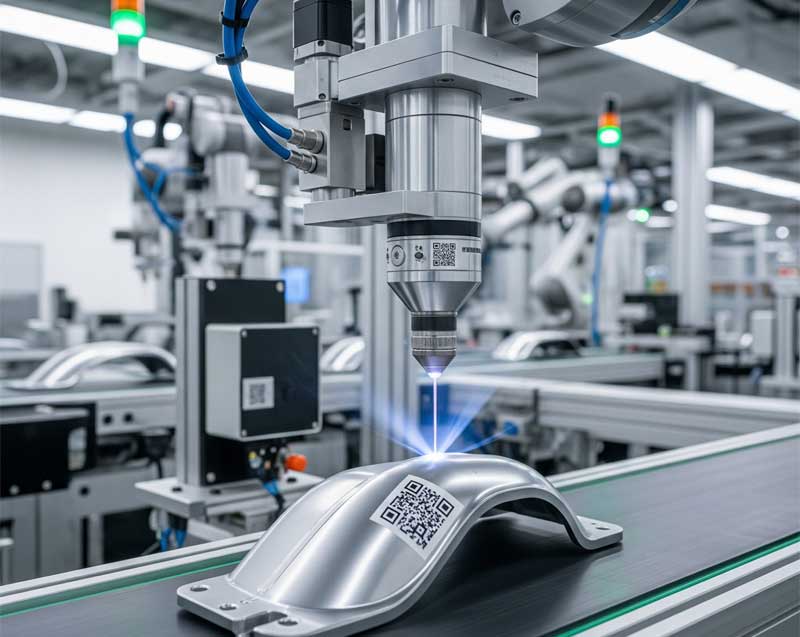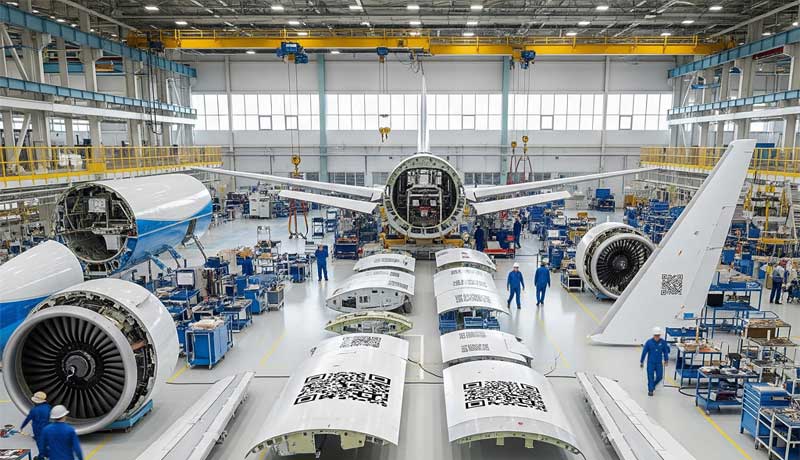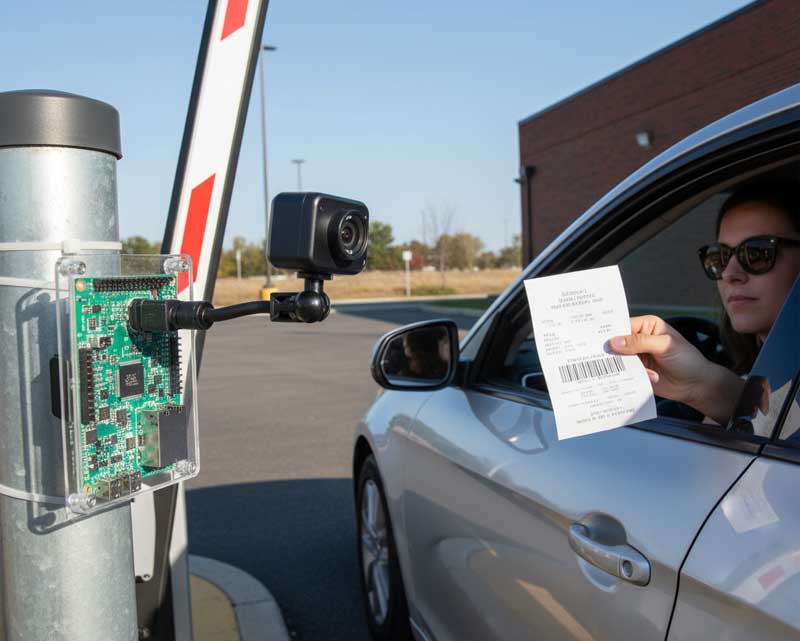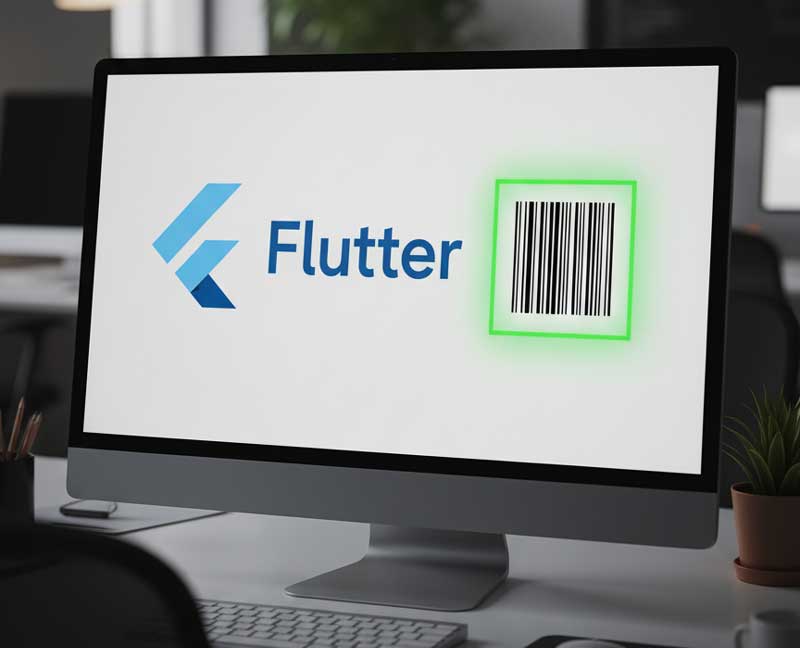Overview of QR Codes in the Manufacturing Sector

The use of technology in the manufacturing process is inevitable to stay competitive and viable in a fast-changing industrial world. One technology, in particular, that has been widely adopted in recent years is Quick Response (QR) codes. These easily scanned two-dimensional barcodes are used for many applications in the manufacturing industry, including product tracking and quality control.
Definition and Purpose of QR Codes
QR codes are a form of matrix barcode (or two-dimensional barcode), such as the data matrix, utilizing a two-dimensional matrix of black squares on a white background. First introduced in Japan for the car industry, they can serve more than just one purpose and cover a lot of different areas of use, such as manufacturing. A QR code can essentially store a lot of data, and you can access that data by using a digital scanning device to read the code. This feature also makes QR codes an effective tool for increasing efficiency, improving productivity, and maintaining accurate data in manufacturing facilities.
Summary of Manufacturing Techniques
Production systems are complex systems that involve many intricate activities ranging from the procurement of raw materials to the assembly of the product, and the warehousing and distribution of the product. Every stage involved in manufacturing needs to be carefully dimensionalized and information communicated accurately to maintain efficiency and prevent waste. With industries working to become leaner both process-wise and resource-wise, the importance of timely and frictionless data is becoming more important. This is where QR codes come in, enabling immediate retrieval and access to the latest information, which can result in improved decision-making as well as operational agility throughout the supply chain.
Significance of Real-Time Tracking
Real-time tracking is essential in today’s manufacturing environment, where businesses track the status of products, parts, and processes as they are happening. QR codes offer factories never-seen-before visibility into their operations. This function makes it possible to structure aimed at interventions, minimize errors, and increase production efficiency. In addition, data collection in real-time also provides a decision advantage, which then translates into a better quality of product and increased satisfaction from customers. In approaching digital transformation, QR codes have an essential role to play in increasing transparency and agility as manufacturers gain momentum. Now let’s take a closer look at how QR codes are utilized in product tracking, parts control, and quality control to demonstrate their revolutionary effect on manufacturing.
Usage of QR Codes on Product Tracking

The application of QR codes in tracking products is a revolutionary innovation in the production sector. Assigning individual QR codes to goods allows producers to optimize the production line and improve traceability at all stages of transportation and warehousing.
Implementing QR Codes on Products
To efficiently utilize QR codes on products, the positions and designs of QR codes should be adapted first by manufacturers. QR codes are generally capable of being printed directly onto product packaging, labels, or even the products themselves where they are conveniently located for scanning. The design of the QR code should take into consideration parameters like size, contrast, and durability to resist handling as well as storage conditions. The QR codes need to be tied to a central database of information about the products, such as where they came from, their specifications, and when they were made. The integration generally necessitates software that is adept at inventory management, as well as tracking the information in real-time.
Advantages of Using QR Codes as Product Trackers
There are numerous advantages of QR codes in product tracking. This is first and foremost because they give manufacturers real-time visibility into their inventory so that they can better manage stock levels and reduce their chance of overproducing or stockouts. This continuous tracking further frees up margins and enhances demand forecasting; inventory planning can therefore save costs and increase operational efficiencies. Not only that, but QR codes also improve traceability – allowing originators to determine the whereabouts and the condition of products across the supply chain in little to no time. Should a recall or quality alert occur, this functionality enables a faster response for communication to any affected parties, reducing risk to consumers and preserving brand reputation. QR codes can also increase customer interaction. Detailed product information, use instructions, warranty details, and even promotions are available to customers when scanning a QR code. This additional level of engagement can elevate the customer experience and build brand trust.
Success Stories in Implementation
Many companies have effectively adopted QR codes as a component of their production tracking, providing evidence that QR codes do have advantages. For example, an automotive major used QR codes on the vehicle parts to simplify assembly lines and secure better inventory. By scanning those QR codes, the assembly line workers can get immediate information from the field about the parts, such as where they are and whether they have already made it through quality checks. This has resulted in shorter setup times and fewer mistakes in the manufacturing process. A company that manufactures consumer electronics utilizes QR codes on its products to allow timely warranty claims and customer support. When scanned, customers are linked to a unique portal to register their product, view troubleshooting information, and submit a warranty claim. This makes things easy for the customers and gives the manufacturer very useful data about how a product is doing, and how one is nevertheless. These use cases exemplify the flexibility and potential of QR codes for product tracking, demonstrating the power to promote increased efficiency, quality control, and customer satisfaction in the manufacturing sector. With the growing acknowledgment of this technology by companies, the usage of QR codes for product tracking is expected to grow in popularity in a wide range of industries.
Parts Management with QR Codes

Efficient machining and parts management is vital in today’s fast-paced world of manufacturing. QR codes are a game changer in this space, allowing manufacturers to simplify their parts inventory and ensure at all times the exact location of every part of their machines.
Overcoming The Parts Inventory Challenge With QR Codes
Utilizing QR codes for parts management permits manufacturers to affix individual QR codes to every component and part they have in inventory. These codes can be scanned by handheld equipment or mobile apps and can immediately retrieve critical details about each part such as specifications, location in production, and status in the production line. This approach reduces the requirement for cumbersome manual tracking procedures that are susceptible to mistakes and can cause unfortunate mistakes in inventory counts. They can also easily distinguish the status of the parts — if they are in the store, which parts require replenishment, and what are the ones available in the production line. This immediate visibility serves to improve inventory levels by minimizing overstock and production stoppages due to material shortages.
Real-Time Updating and Notification Functionality
One of the more attractive benefits of using QR codes within your parts strategy is the opportunity for updates in real time as well as notifications. If a part is scanned, the system can immediately update inventory records, strike “used” items off the list, and notify all team members about low stock. Plan ahead This kind of forward-thinking ensures production schedules are maintained – and there is always supply on demand. Additionally, when paired with inventory management software, QR code scanning can offer analytics and reporting capabilities. You can monitor consumption trends of usage and make decisions on purchasing and material management. The data-driven approach not only improves the efficiency of the operation but also allows the manufacturer to anticipate demand and optimize their stock handling strategy.
Issues and Parts Handling Solutions
Though the use of QR code technology in parts management offers a variety of benefits, you need to be aware of some of the potential drawbacks. One of the most significant problems is the learning curve and training that your staff will need to use a QR code system with the needed proficiency. Staff will need to know how to scan codes, understand the data, and use the supporting software. To combat this challenge, producers must spend time in training and be confident that each of their employees is familiar with the technology. Also, a clean and uncluttered environment for scanning QR codes is very important, as clutter can introduce reading errors or slow part identification. Another issue has to do with the physical robustness of QR codes. Industrial elements as a consequence of operations, parts may be subject to extreme conditions such as chemicals, heat, or mechanical abrasion. Manufacturers may also want to use tough gear like weather-proof/hot-cold resistant or even high-temperature stickers for QR code labels, so they can be scanned over their entire lifespan. Facing these challenges and problems head-on allows manufacturers to realize the value of QR codes for parts management, increasing efficiency, cutting costs, and driving greater overall productivity in their operations.
In conclusion, QR codes are set to revolutionize parts management in manufacturing. Now able to do live inventory tracking, quick updates, and tackle issues with tactical solutions, QR codes are setting the tone for smarter, faster manufacturing.
Item Inspection By Scanning the QR Code

Quality control is an essential aspect of manufacturing, and it helps to ensure exemplary quality; products that do not meet established standards and specifications are rejected. The incorporation of QR code scanning in quality assurance systems improves the ability to manage, monitor, track, and enhance the quality of goods effectively. In this chapter, we are going to discuss how a QR code can contribute to the quality control process, gathering valuable data for analysis to enhance the end quality of what we produce.
Quality assurance through QR coding
QR codes are a handy aid in the implementation of an extensive system for quality checks on all phases of the production. By applying QR codes to products or parts, manufacturers can retrieve extensive information about the item – covering production history, inspection results, and conformance documents. This real-time information access is useful for quality control staff as checks can be made more efficiently and with greater accuracy. For instance, once a product arrives at a quality inspection station, reading its QR code will provide immediate access to the item’s specifications and to records of all previous inspections, permitting this time a thorough and knowledgeable inspection.
In addition, QR codes can be designed to stimulate specific quality control procedures. For example, if a product’s QR code shows it has been through a certain number of production cycles, that product can initiate the quality check to make sure that it still passes the quality rules. The benefits of this proactive approach go beyond preventing the sale of faulty products; they create a culture of continuous improvement on the floor.
Overview of Data for Quality Analysis
One of the key benefits of QR codes for QC is the sheer amount of data it can accumulate, interpret, and analyze at the click of a button. Every QR code scan produces data that you can combine in one place to see trends, patterns, or potential problems. Such data collection can include defect rates, inspection results, and adherence to quality criteria.
This data can be utilized by manufacturers to perform a root cause analysis to identify what was causing the quality issue. For instance, if one lot of products always fails quality inspections, the data will be more helpful in determining if the problem is with raw material quality, production processes, or operator ability. This understanding helps manufacturers apply specific corrective measures and can improve overall quality assurance.
The data obtained from QR code scanning can also be combined with other systems, for example, ERP (enterprise resource planning) and MES (manufacturing execution system). This combination is crucial to give one unified place where all forms of KPIs are seamlessly embedded and will provide the analysis and visibility to improve decision-making throughout the enterprise.
Enhancing the General Quality of Products
The advantages of QR code scanning in quality control do not stop with instantaneous checks and information gathering. QR codes can help companies create a culture of responsibility and accountability around product quality. All staff, regardless of position, can be educated on the value of quality and how QR codes help to keep everyone on track. If workers know their decisions will influence the quality metrics, they will take more pride in their work and not accept anything less than excellence.
Additionally, QCS processes empowered with QR codes can lead to TI projects as by-products of the findings. Manufacturers can use their historical quality check data to improve production, streamline workflows, and update training. By dynamically monitoring and adapting quality control practices via data-driven insights, manufacturers can drive higher product quality, waste reduction, and deliver greater customer satisfaction.
In short, integrating QR code scanning into quality control procedures provides manufacturers with an invaluable way to improve quality in their products. The efforts in systematic quality assurance checks, gathering data that can be acted upon, and building a culture that holds people and the system accountable are such that the organization can prepare for more success in the long term, as the competition among organizations intensifies.
Conclusions on the Future of QR Code Implementation in Manufacturing
With the development of manufacturing, the application of QR codes has become a breakthrough in manufacturing, which has simplified production and improved operational efficiency. QR code scanning too has been a game changer – enabling products and parts tracking in real-time as well as enhanced quality control. Applying this technology, producers can increase their efficiency in inventory management and also guarantee high-quality standards along the complete production process.
The advantages of using a QR code in manufacturing are numerous. They offer a transparent and visible way of monitoring products from production to shipment and make changes in real-time based on real-time information. This increases efficiency and reduces errors, resulting in greater customer satisfaction. The examples mentioned in the sections above reaffirm the operational benefits of QR code for different manufacturers with a focus on all practical domains.
In the future, the prospects of applying QR code in manufacturing are encouraging. As technology continues to evolve, we are likely to see more complex applications of QR codes such as integration with the Internet of Things (IoT) systems, machine learning, and AI. With such developments, manufacturers will be able to take even more advantage of their operations, gain a better understanding of production, and maintain their equipment in a predictive approach incumbents only can dream of.
Further, with the focus of industries towards sustainability and transparency, QR codes might also be the key in monitoring the lifecycle of products, compliance with regulations, and earning the trust of consumers. QR codes can be used – in the form of a tag, for example – to show sourcing information, production methods, and the environmental impact of products, usefully telling the story of a manufacturer’s commitment to sustainability.
In conclusion, the use of QR code scanning in manufacturing is not a mere trend but rather a strategic move that brings about a plethora of benefits in terms of efficiency, accountability, and quality assurance. At a time when technology industries see digital as the ‘new normal,’ the manufacturing sector is ripe for disruption using QR code-based technology. Organizations that take advantage of this technology will be in a good position to succeed in this competitive environment to innovate and add value to their clients.
Ready to get started?
Barcode Reader SDK Create Barcodes








